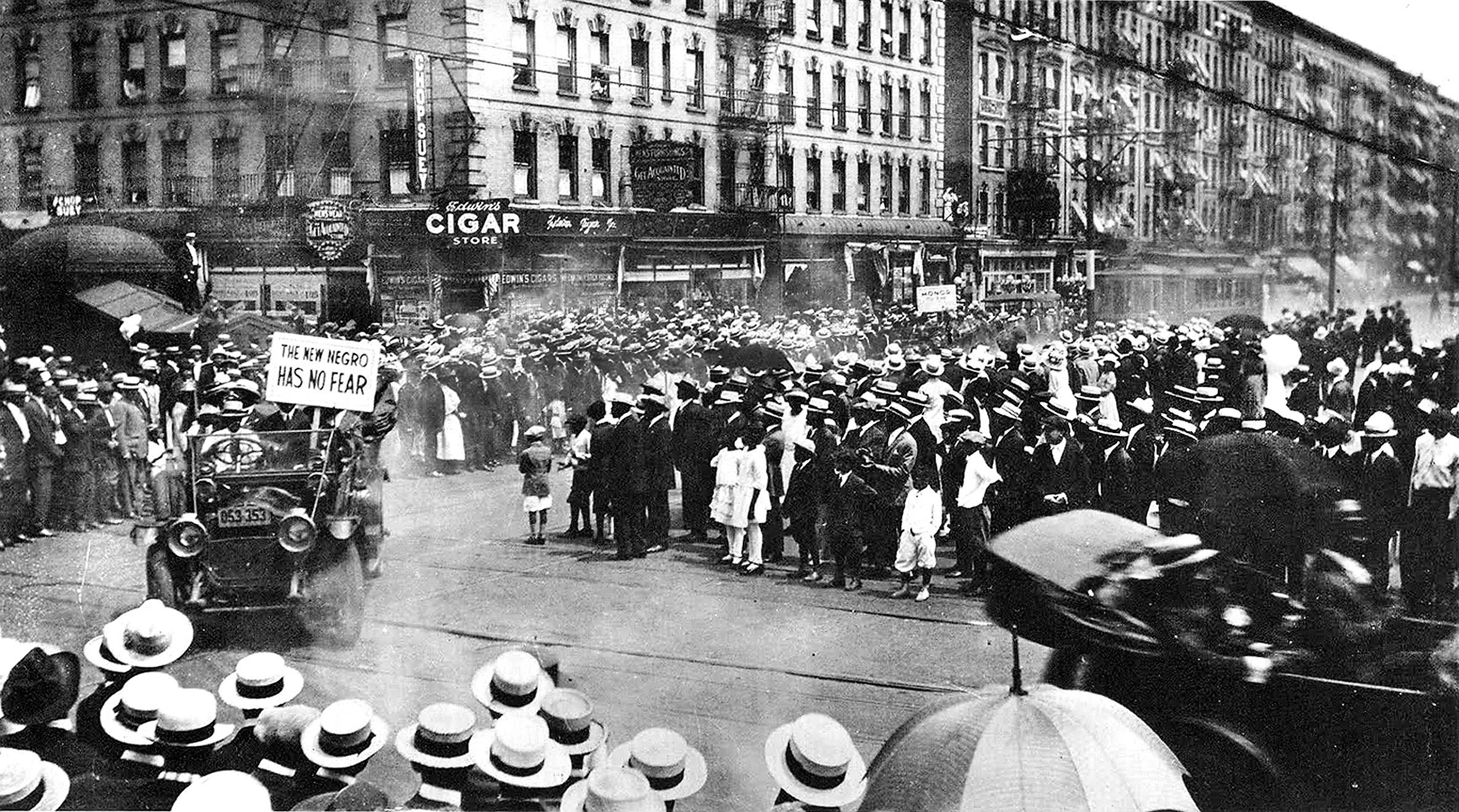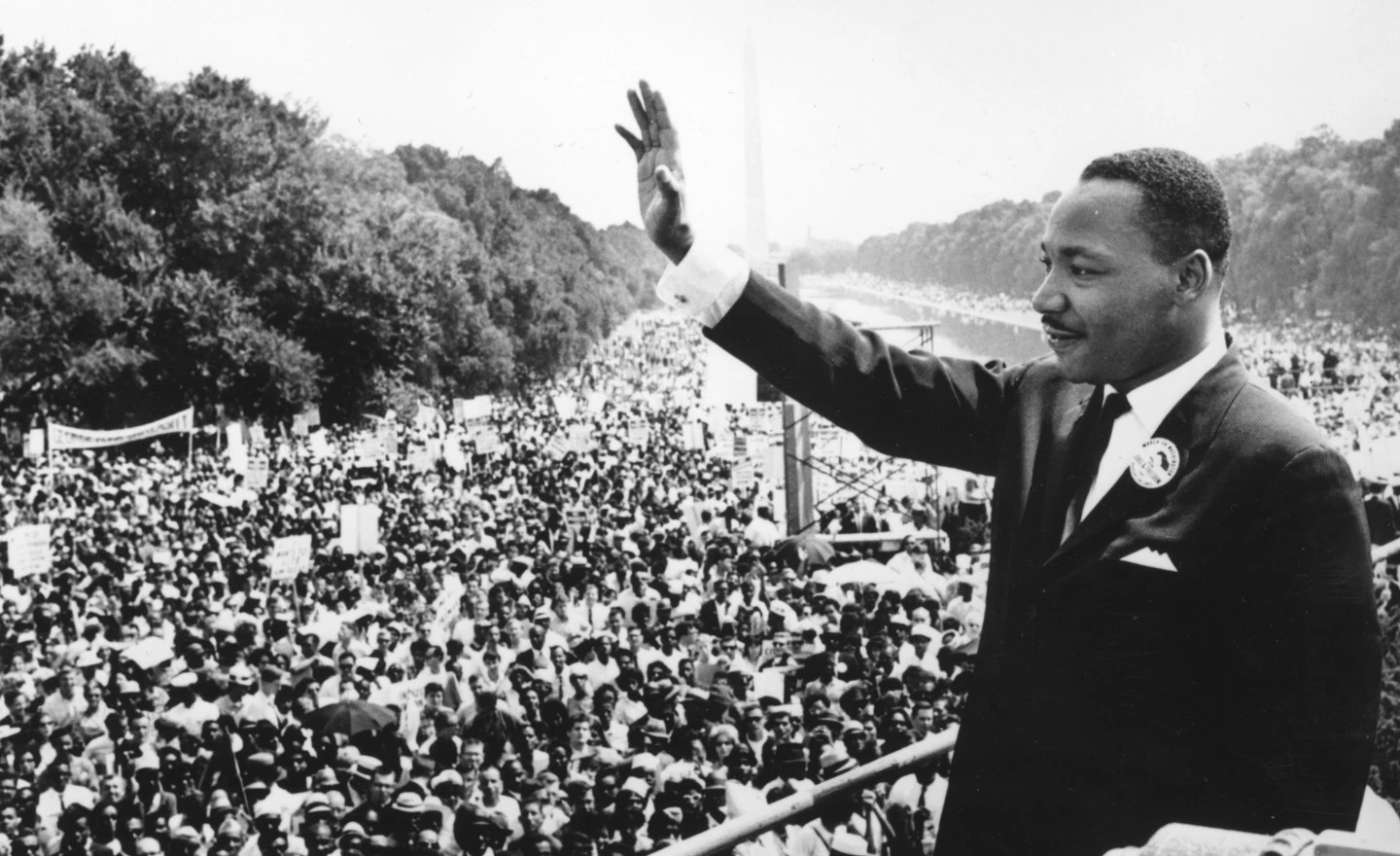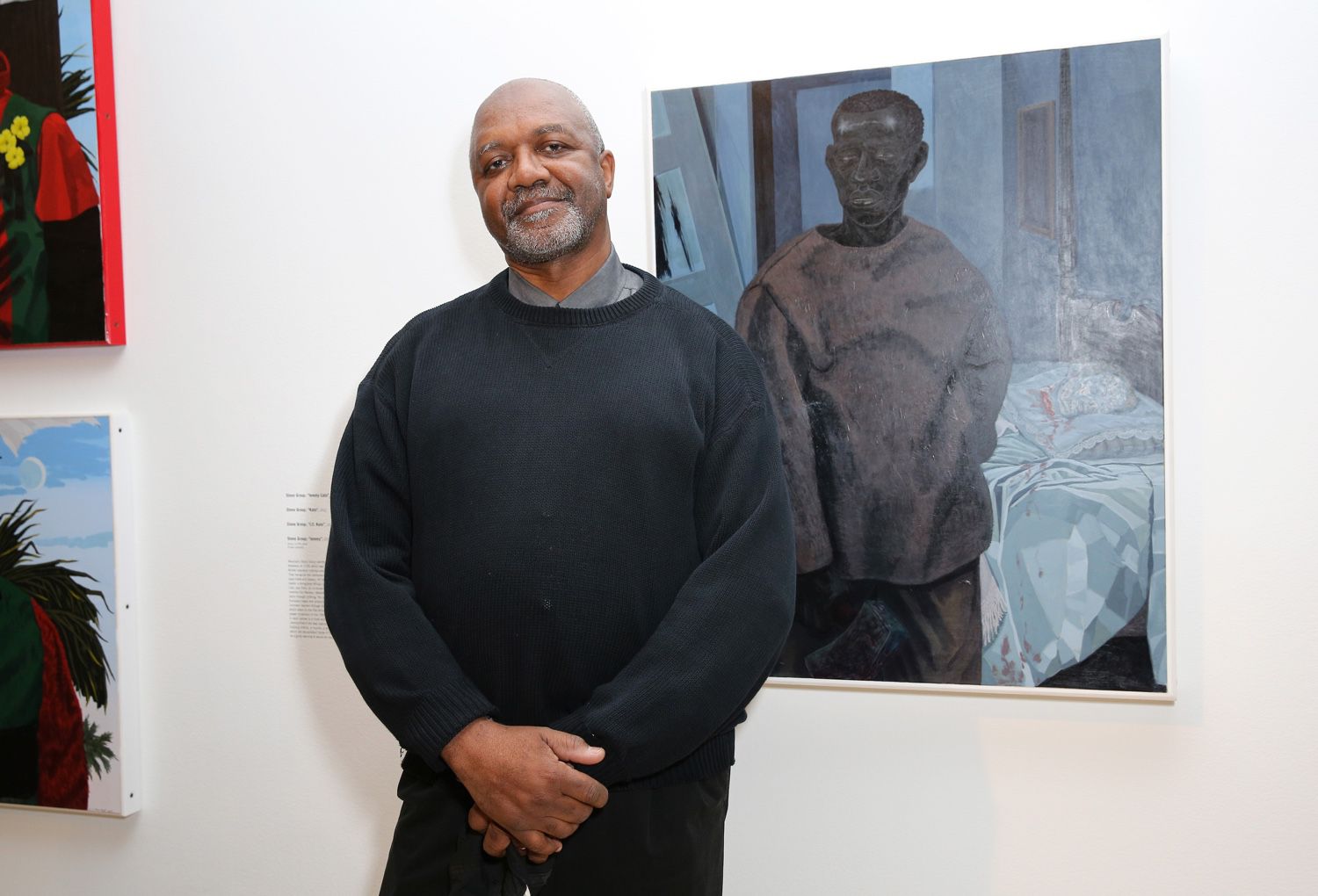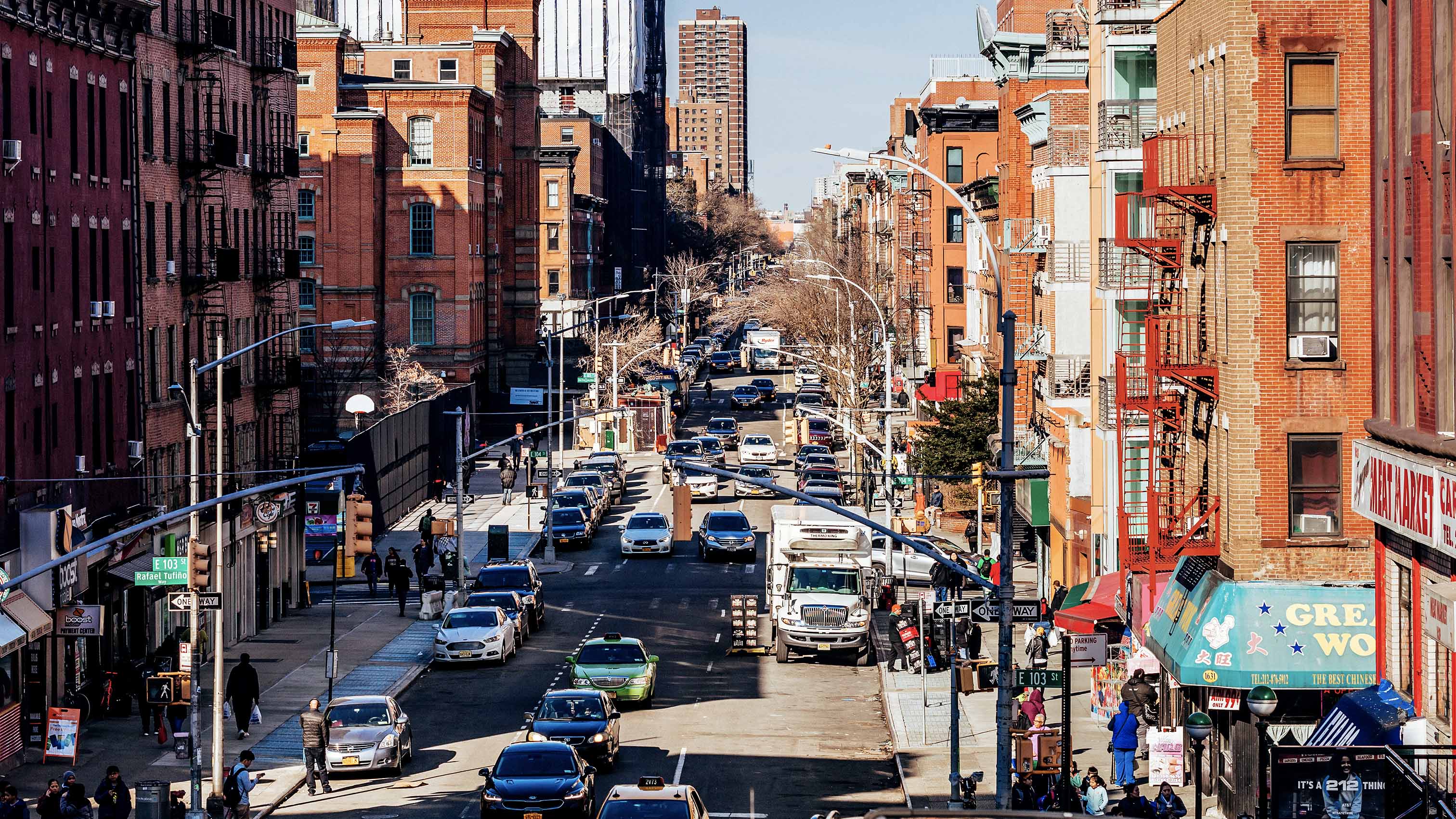The Renaissance also inspired many elements of the Civil Rights Movement, giving African Americans a sense of unity to fight for their beliefs.
Impact/Legacy
The Harlem Renaissance was not limited to the pioneers that led it. Its beauty also reflected the richness of the everyday citizen. Through literature, music, and art, the people of Harlem created a new cultural frontier.
Those frontiers united African Americans in political movements that advocated for equality. Marcus Garvey led one such Pan-African movement, hosting a rally at Madison Square Garden in 1920 that attracted 25,000 people.
"The black skin is not a badge of shame, but rather a glorious symbol of national greatness."
~ Marcus Garvey, Madison Square Convention speech

Madison Square Garden Convention, the sign reads,
"THE NEW NEGRO HAS NO FEAR",
Race, Racism and the Law.
Global movements such as Negritude in France to fight colonialism and assimilation were inspired by the Renaissance for celebrating black culture and identity.
"The Negro spirituals, the blues, and jazz, created in the United States by descendants of African slaves, constitute the most magnificent flowering of our collective soul."
~ Léopold Senghor, opposer of colonization

Civil Rights Movement, The Hill.
Martin Luther King Jr. reciting a poem by Langston Hughes, Youtube
Culturally, it was a breeding ground for African American talent. Modern-day hip-hop artists incorporate elements of jazz and blues. Visual artists draw with vibrant colors, geometric shapes, and other techniques used during the Harlem Renaissance.

Kerry James Marshal, painter, thoughtco.
"The Harlem Renaissance was a defining moment in American culture, when black artists were finally able to assert their voice and creativity."
- Kerry James Marshall
Sanford Biggers, Harlem artist, Bronx Mueseum.
"The Harlem Renaissance was a moment of great possibility and experimentation, and it laid the groundwork for many of the creative movements that followed."
~ Sanford Biggers, Harlem artist
The legacy of the political and social activism of the Harlem Renaissance also inspired modern artists to use their work as a means of advocacy or resistance.
"What is the responsibility of the artist during the Harlem Renaissance? What is the responsibility of the musician, poet, and filmaker in the Black Lives Matter movement? What does it mean to be a black artist?"
~ Claudrena Harold, history professor and author
The Harlem Renaissance created a culture. One with a rich history, and a painful one too. One that combined all the possible forms of human expression. The Harlem Renaissance truly was a time for change and the crossing of countless frontiers, whose legacies can still be felt today.

Modern-day bustling neighborhood of Harlem, Corcoran.
"We younger Negro artists who create now intend to express our individual dark-skinned selves without fear or shame. If white people are pleased we are glad. If they are not, it doesn’t matter. We know we are beautiful. And ugly too. The tom-tom cries and the tom-tom laughs. If colored people are pleased we are glad. If they are not, their displeasure doesn’t matter either. We build our temples for tomorrow, strong as we know how, and we stand on top of the mountain, free within ourselves."
~ Langston Hughes, The Negro Artist and the Racial Mountain